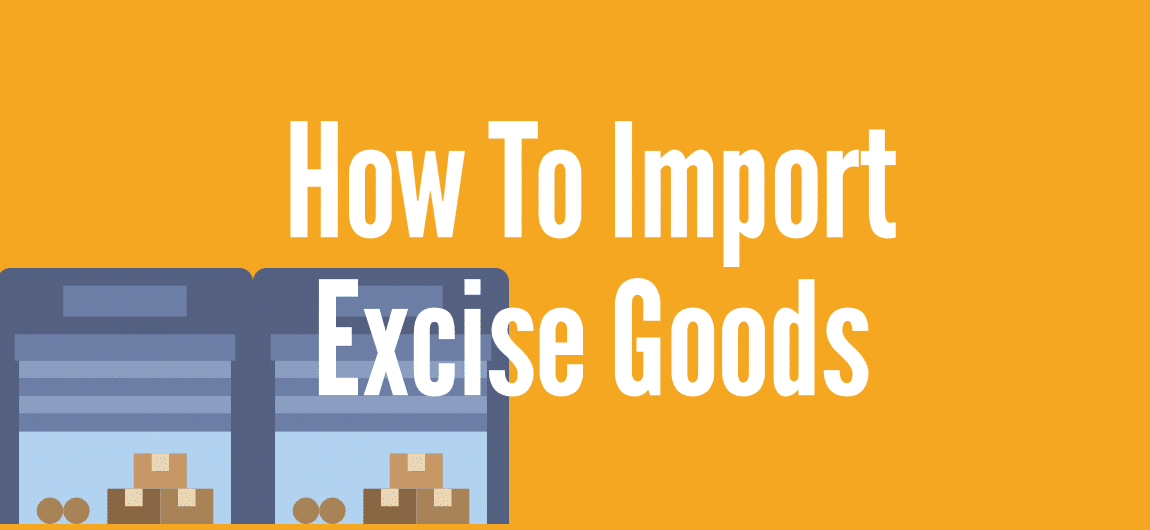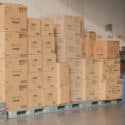You know how this works by now; you’ve been importing for a while. You’ve got all your documents lined up – all your ducks in their proverbial rows. When your freight forwarder asks you “Do you have an EORI number?“, you scoff at such a question and whip out your twelve-digit code like a pistol in a Western shootout.
“Do you have an EORI number” . . . is this amateur hour? Please.
The point is – you know how importing works. Once your goods reach the UK port, you will have to pay UK Duties and Taxes to HMRC for your goods to be released to you (and, if you’ve been lazy with your paperwork, you may even have to pay Customs charges too) before you go on your merry way. After you’ve mastered the process once, you’ve done it a thousand times, right?
However, even the most seasoned of importers can be thrown for a loop when it comes to excise goods…
This is a purely informational post for any importers that may want to import excise goods. Excise goods are not our speciality and we do not currently ship them
-
What are excise goods?
Typically, when you import you’ll pay Customs your duties and taxes before your goods are released to you; it’s a border tax. Excise, however, is an inland tax in addition to any possible Customs charges – so you don’t pay excise duty at the UK border; you pay them in the country. For example, alcoholic beverages are almost always 0% duty rated; this means that you don’t pay any duty charges to Customs – but you’ll have to pay excise duty within the UK.
-
When do you pay duty on excise goods?
You will need to pay duty on your excise goods when they leave any duty suspension conditions.
Excise goods leave duty suspension when:
- they’re released for consumption or are otherwise made available for consumption (generally via the warehouse system) registered trader (REDS) or occasional importer receives them in the UK
- a vendor makes a delivery under distance selling arrangements
- missing consignments and other dutiable shortages are discovered
- goods imported for personal use are then sold or put to commercial use – Source: UK Trade Tariff: Excise Duties
-
What are some examples of excise goods?
- Alcohol
- Imported composite goods containing alcohol
- Tobacco Products
- Hydrocarbon Oil
- Climate Change Levy
- Biofuels
-
How do I import excise goods and what do I need?
Now, the process for importing excise goods from within the EU and from outside the EU is slightly different – but the majority of it is the same. So we’re going to run you through the main steps of importing excise goods to the UK, then teach you the specifics underneath. Let’s go!
- Pay all the normal Customs duties etc. Excise duties are on top of any required Customs charges, so the first thing you need to do when you import excise goods is pay your original Customs charges (if there are any).
- Registered Consignor/Consignee. Excise goods need to be moved between government-sanctioned people and places, so (depending on whether you’re importing from within or outside the EU) you’ll need to register as an approved consignor or consignee – or you can hire a registered consignor or consignee to act on your behalf.
- Registered Warehouse. To hold and store excise goods you need to be (or use) a government-approved excise warehouse. To be considered for approval, storage and distribution warehouses need to have: a minimum potential duty liability of £500,000 on the average monthly stockholding of duty-suspended excise goods OR a duty liability of at least £2 million on an annual throughput of duty-suspended excise goods – Source: Receiving, Storing and Moving Excise GoodsHowever, if you’re importing excise goods, there is another kind of warehouse you can use – although it does not apply to everyone. Trade facility warehouses are premises where excise goods can be stored in duty suspension for the following purposes:
- the maturation of spirits
- goods which will not bear UK excise duty, for example, goods for export, goods used in pharmaceuticals, goods used in foodstuffs, goods to be removed for use as ship or aircraft stores
- performing an allowable operation on the goods
- any other purpose allowed by HMRC
Trade facility warehouses don’t need to meet the same requirements that storage and distribution warehouses do – however, approval will be restricted to the specific trade need applied for.
- Pay Excise Duty. When you want to release your goods for consumption/selling and they leave the duty-suspended warehouse, you will need to pay duty.
-
How do I import excise goods from in the EU and what do I need?
If you’re importing excise goods from within the EU to the UK, the transportation must happen between government-approved people and places. (Registered warehouses and registered consignees.) In addition to this, any duty-suspended movements of excise goods moving within the EU must be recorded on EMCS; this is wavered if your goods are allowed to move under simplified procedures – something we’ll be talking about in a minute.
When importing excise goods from within the EU, you will need a Registered Consignee (note: not a Registered Consignor). Registered consignees are government-approved traders who are registered by HMRC to receive and account for the duty on excise goods from other countries within the EU.
Now, there are three ways that you can import duty-paid excise goods into the UK (from within the EU) for commercial purposes:
- the standard UK duty-paid scheme for unregistered commercial importers
- the registered commercial importer scheme
- distance selling arrangements for sales to private individuals
If you aren’t transporting your goods under distance selling arrangements, you will need a Simplified Accompanying Administrative Document (SAAD) covering your shipment too.
-
How do I import excise goods from outside the EU and what do I need?
When you’re importing from outside the EU, the same rules as above apply – however, the movement between the entry point to the excise warehouse must be carried out by a Registered Consignor as opposed to a Registered Consignee. If you’re a Registered Consignor you are still subject to EMCS procedures.
In addition to this, if you’re importing excise goods from outside the EU, you’ll not only need an excise warehouse but you’ll also need a customs warehouse approval for your premises.
-
Summary
We hope you found this guide to excise goods useful. One last question we often hear is are excise goods the same as goods that require a license? The answer…No. You do not need a license to import excise goods – however, you will need to be a registered consignee/consignor and have access to a government-approved excise warehouse.
And, although we don’t currently ship excise goods if you want to ship anything else to the UK, don’t hesitate to contact us or grab a quote.
Fantastic company. I just started importing from China and there are so many unknowns with regards to duties, taxes and logistics. Shippo took care of everything and for a very affordable price. Always had quick response times for queries from Zac and anyone else I dealt with. I will be using these guys every time.Rohan Whelehan -
You may also enjoy reading…
Protect Yourself From Hidden Fees When Importing From China
0 commentsWe all want an all-inclusive quote when we’re offered a price right…? When it comes to importing this isn’t always the case. Shippo can make
LCL – How Will My Goods Be Delivered
0 commentsThe standard delivery offered when importing goods to the UK is kerbside. This means that the driver will park up outside your premises and it’s
FCL – How Will My Goods Be Delivered?
0 commentsAs with the standard deliveries, full container load deliveries are “kerbside” This means the container will arrive on the back of the truck and you’ll




